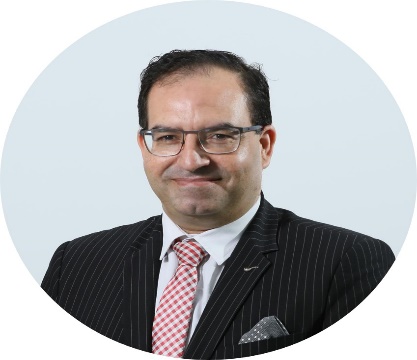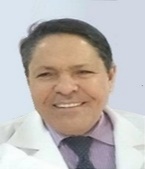Scientific Program
Keynote Session:
Oral Session 1:
- Oral and Public Health Dentistry | Advancements in Dentistry | Endodontics and Orthodontics | Oral Medicine and Pharmacology
Title: The role of charting dental anomalies in human identification.
Biography:
Jayakumar is a young Indian Forensic Odontologist/ Dentist from the UK who completed her Bachelor of Dental Surgery in India in 2017 and holds a Master’s in Forensic Odontology, Scotland with a distinction in 2019. She is currently working in the field of research, publishing articles and conducting lectures in Forensic Odontology. Also, a keynote speaker for international conferences held in the UK, Europe, Middle East and South Asia, she is a prospective PhD candidate in the UK providing an expert-level opinion in cases of human identification, age estimation, bitemark analysis and dental malpractice.
Abstract:
An increase in awareness on dental hygiene among people through the years consequently provoked a significant decrease in the occurrence of dental caries, and thus, a decrease in the number of dental restorations. This improvement of oral health affected the comparative dental analysis using dental treatments for human identification; hence, existing dental features or anomalies could act as unique identifying features. This study evaluated the awareness of dentists on charting dental anomalies by a dental charting task and addressed the importance of maintaining dental records for forensic and medico-legal purposes. An online survey-based study was conducted on 101 dentists practicing in the South Indian states of Karnataka, Kerala and Tamil Nadu through Google Forms (© 2019 Google Inc., v 0.8). Results showed that clearly visible anomalies such as midline diastema, crowding, and transposition were mentioned by only 11.8 %, 22.7 % and 5.9 % of the respondents respectively. 17.8 % misnamed the accessory cusp on a premolar as a Talon’s cusp. The awareness of Forensic odontology among dentists was exceptional but the dental charting needs improvement. A “Scale of Forensic Significance of Dental Features” was created to interpret the accuracy in recording anomalies which comprised of three parameters namely: Incorrect answer(0 %), Partially Correct answer(50%) and Accurate answer(100%). They classify different levels of forensic significance of dental findings in human identification. Only a few respondents submitted an Accurate or a Partially Correct answer and, as a result, an Atlas of Dental Anomalies (www.theatlasofdentalanomalies.com) was created to rectify this poor pattern of dental charting.
Title: Periodontitis and diabetes: a two way relationship.
Biography:
Abstract:
Statement of the Problem: Dentists awareness about the bidirectional relationship between diabetes and periodontal health and the role they can play to improve glycemic control is needed. Diabetes mellitus is a chronic debilitating disease that is gaining ground as a global epidemic. Given the potential for severe oral health complications of diabetes and the steady increase in the incidence of the disease, it is crucial to understand the role of dentist in this context Research has documented relationships between diabetes and oral health diseases such as periodontitis. Concerning the effects of diabetes on the periodontium, there is a strong relationship between periodontal health and glycemic control. On one hand, poor glycemic control in patients with diabetes is related to increased severity of periodontal disease On the other hand, severe periodontal disease can result in poor glycemic control and other complications.These relationships have been widely investigated and the consensus is that there is a two-way relationship or bidirectional relationship between these chronic conditions.Â
Title: Minimal Invasive Post Endodontic Monobloc Restorations for Erupting Permanent Molars During Adolescence Period.
Biography:
Abstract:
The restorative treatment of non-vital teeth is a common problem for dentists. In pediatric dentistry, partially erupted molars with extensive coronal destruction or less coronal height have an insufficient crown height to gain retention for the full crown cast restoration, hence endocrown appears to be a suitable option for restoring the endodontically treated teeth in these situations. Although the traditional crown supported by radicular metal posts is still extensively used in dentistry, it has been heavily criticized for its invasiveness. There are currently new materials and treatment possibilities based solely on adhesion. Over the last few decades, advancements in adhesive dentistry have made significant contributions to cosmetic and restorative dentistry. The endocrown is advised for the repair of severely damaged molars, which necessitates the use of particular restoration techniques to meet biomechanical criteria. The endocrown is recommended when the pulp chamber provides suitable conditions for retention. The endocrown preserves tooth structure while being minimally invasive. Clinical investigations have demonstrated that the endocrown has a long functional life, and it has emerged as a potential option for the cosmetic and functional restoration of endodontically treated molar teeth. The current lecture will discuss endocrown for from A-Z.
Title: The whitening and abrasion effect of bentonite on human tooth enamel.
Biography:
Abstract:
Title: Digital approach to abutment selection for dental implant restoration.
Biography:
Gholamreza Esfahanizadeh was born in 1974, Tehran. - Graduated in Dentistry from Islamic Azad University of Tehran, 1999 - Received Prosthodontics specialty degree in 2004 and Fellowship Prostho Implant specialty degree in 2014, from Shahid Beheshti University of Tehran. - Currently is Associate Professor of Prosthodontics Department of Islamic Azad University of Tehran. - Has several international articles in prestigious domestic and foreign journals. - Scientific speaker at Internal and International Congresses. - Author of the book “Application of finite element method in implant and dentistry”






